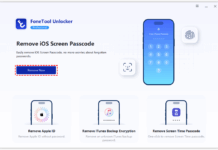There’s no doubt that the world of work is changing. With more and more people working remotely, traditional office space is becoming less common. Enter hybrid work: a mix of remote and in-office work. But what does that actually mean? And how can you make it work for you?
In the following article, we share everything you need to know about hybrid work, from its definition and the benefits it offers to the tips you need to make it work. Without further ado, let’s begin!

What Is Hybrid Work, and Why Is It Becoming More Popular?
Hybrid work is an evolving concept of allowing employees to combine traditional in-office work with remote work from home, other locations, or both. This type of flexible workplace arrangement has become increasingly popular in recent times as businesses adjust to the impacts of the pandemic.
Introducing a flexible working culture comes with a wide range of advantages for employers and employees alike. For example, it allows employees to enjoy a better work/life balance due to less travel or commuting time overall. It also gives employees a greater sense of freedom and control over their lives by being able to choose where they want to work on any particular day.
At the same time, hybrid work can benefit businesses because it can offer recruitment opportunities that previously were not viable due to geographic limitations. It also reduces overhead costs and improves collaboration between remote team members.
In short, hybrid working is now seen as an essential keystone for flexible and accommodating employment environments.
The Advantages of Hybrid Work for Employees and Employers
Hybrid work provides a valuable opportunity for both employers and employees to reap the rewards of working from home, while still allowing for some employee and team engagement in the office.
For employers, this allows for cost savings on overhead within their physical workspace, as well as an improved ability to focus on projects without distractions. This translates into greater efficiency and productivity. For employees, hybrid work offers flexibility while giving them an opportunity to participate in the workplace culture. It also gives them access to better mental health practices such as avoiding commute times or leaving the office at a reasonable hour daily.
Hybrid work can provide an all-encompassing approach that provides benefits to both employers and employees.
Tips for Making the Most of Hybrid Work
Working both remotely and in person can present unique opportunities that a traditional work setting does not. How you approach hybrid work depends on your company’s specific situation and expectations, but adopting certain strategies can help you maximize the potential of this form of work.
First, prioritize communication with your team frequently to ensure everyone is well informed regardless of where they’re physically located. Consider installing video conferencing software such as Zoom or Teams for easier communication when divided between multiple locations. Additionally, make sure all tasks are properly tracked as there may be differences in the environment across teams which could disrupt employee focus and lead to missed deadlines or confusion. Lastly, don’t forget that remote employees still need regular feedback from their team leaders just as much as those who are in the office.
Regular checks ins can go a long way toward recognizing successes and motivating employees while connecting digital and brick-and-mortar spaces. With these strategies implemented, hybrid work has the potential to significantly increase productivity levels without sacrificing quality services.
Strategies for Successful Implementation of Hybrid Work
Implementing a hybrid work set up in the workplace can be a significant transition for any business. To ensure that gaps in communication or productivity caused by this shift are avoided, it’s important to develop specific strategies with employees and team members. Meeting regularly with staff to discuss their feedback on the hybrid setup, brainstorming ideas for improving collaboration, and establishing clear paths for communication are all essential for making hybrid work successful.
Furthermore, training sessions and workshops should be offered so that everyone is comfortable and familiar with remote working platforms such as video conferencing, shared tasks management systems, etc., while providing access to reliable technology is critical. At the end of the day, creating an effective hybrid work system requires thoughtful planning, sufficient support services, and diligent execution.
Bottom Line
If you’re looking for a way to increase productivity and satisfaction in your workforce, hybrid work might be the answer. When implemented correctly, hybrid work can benefit both employers and employees. By following the tips given above, you can make the most of hybrid work and create a productive, positive environment for all.



